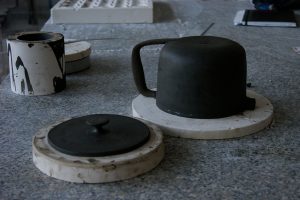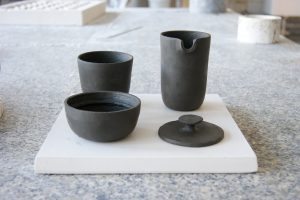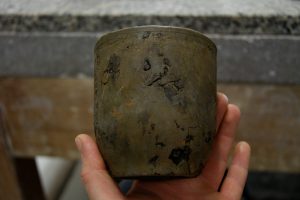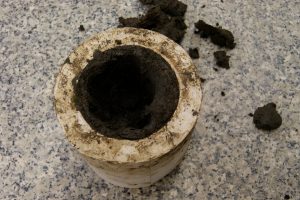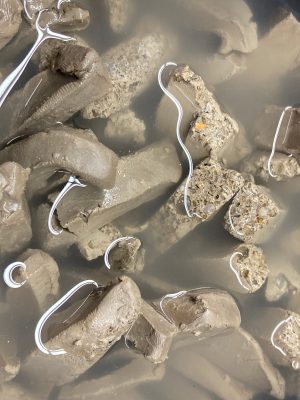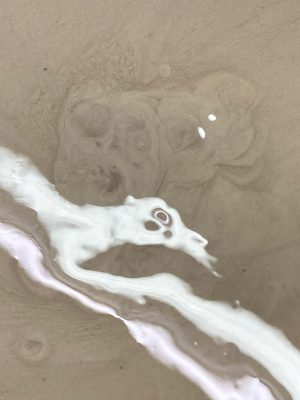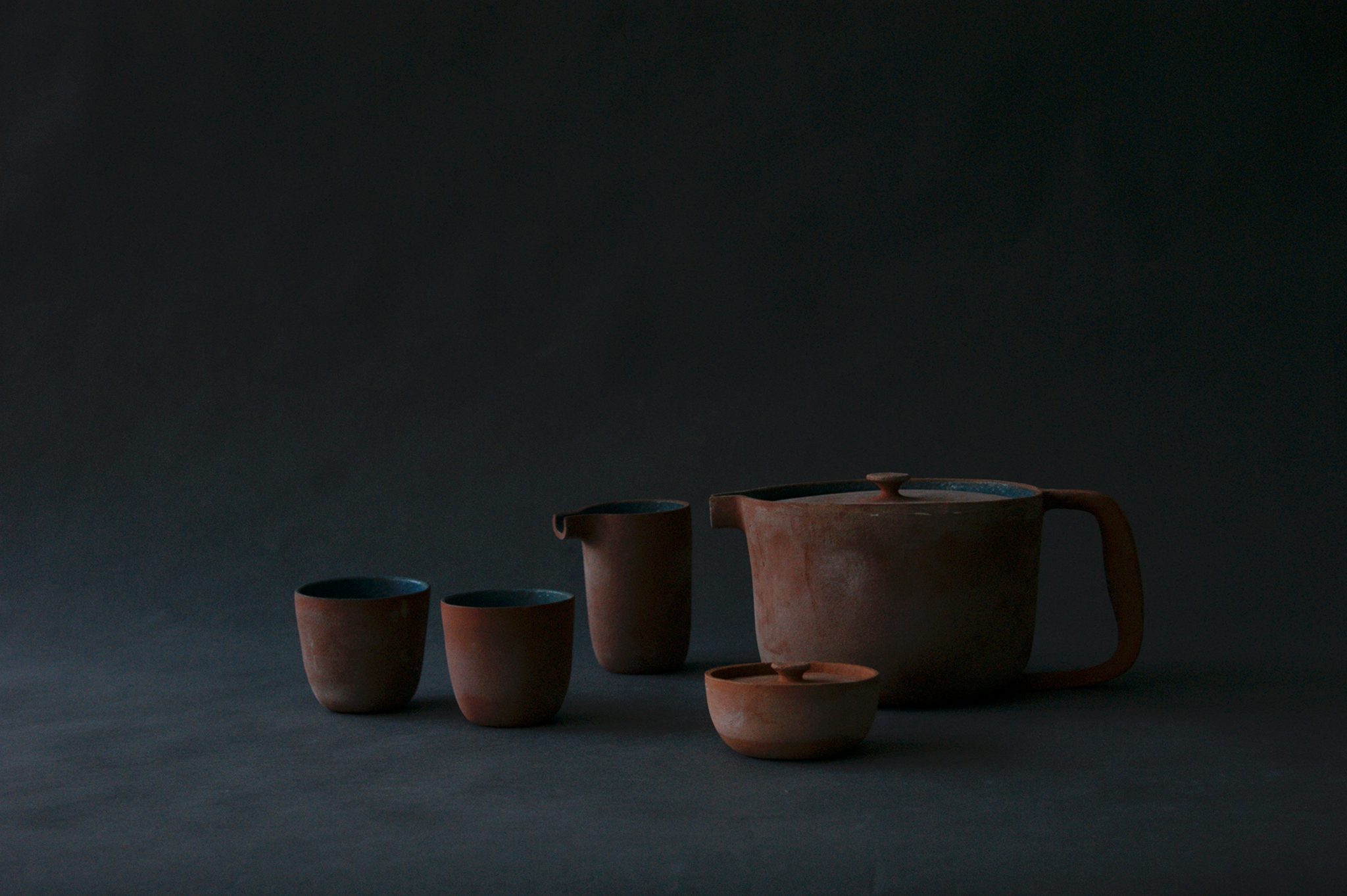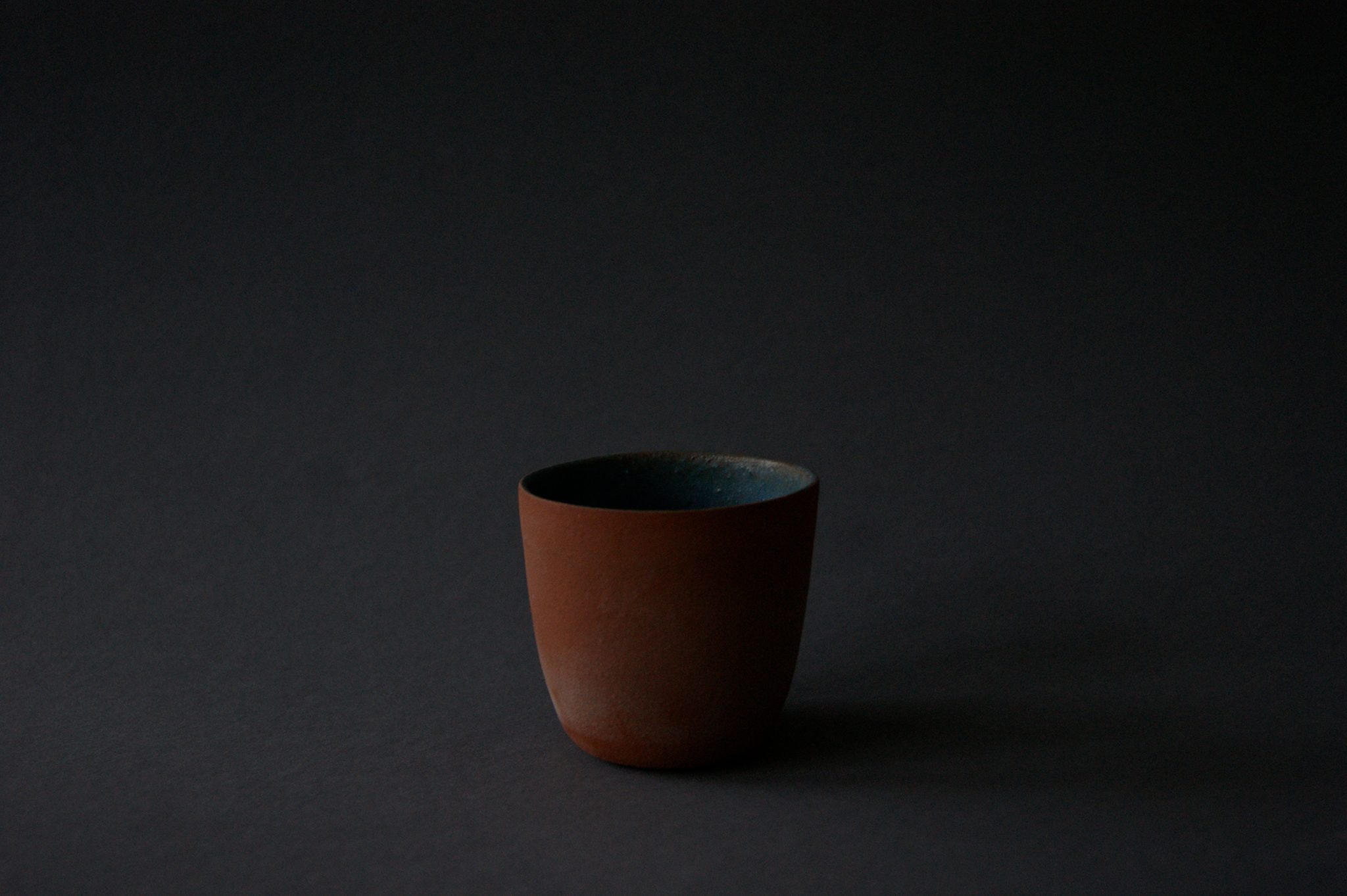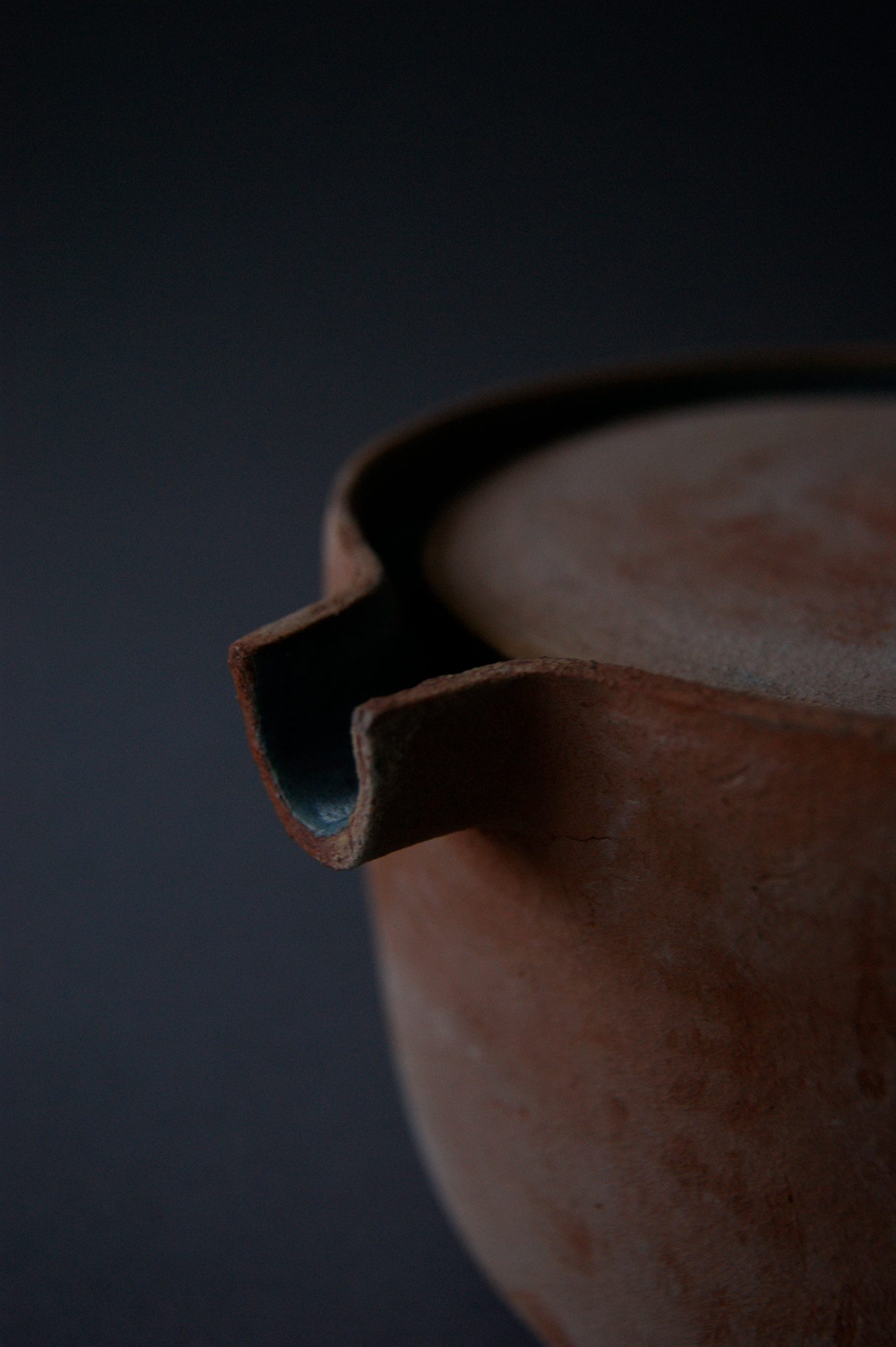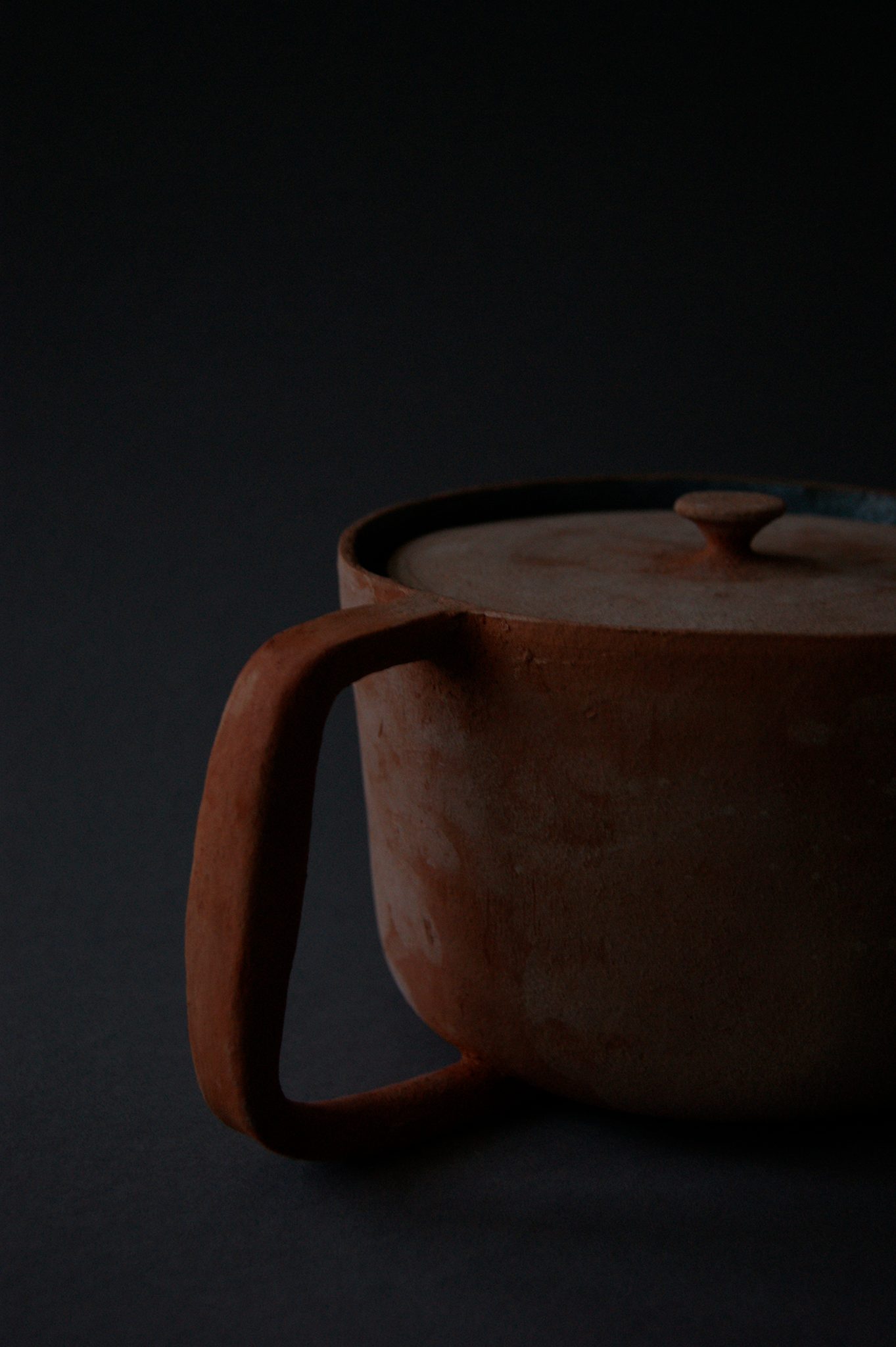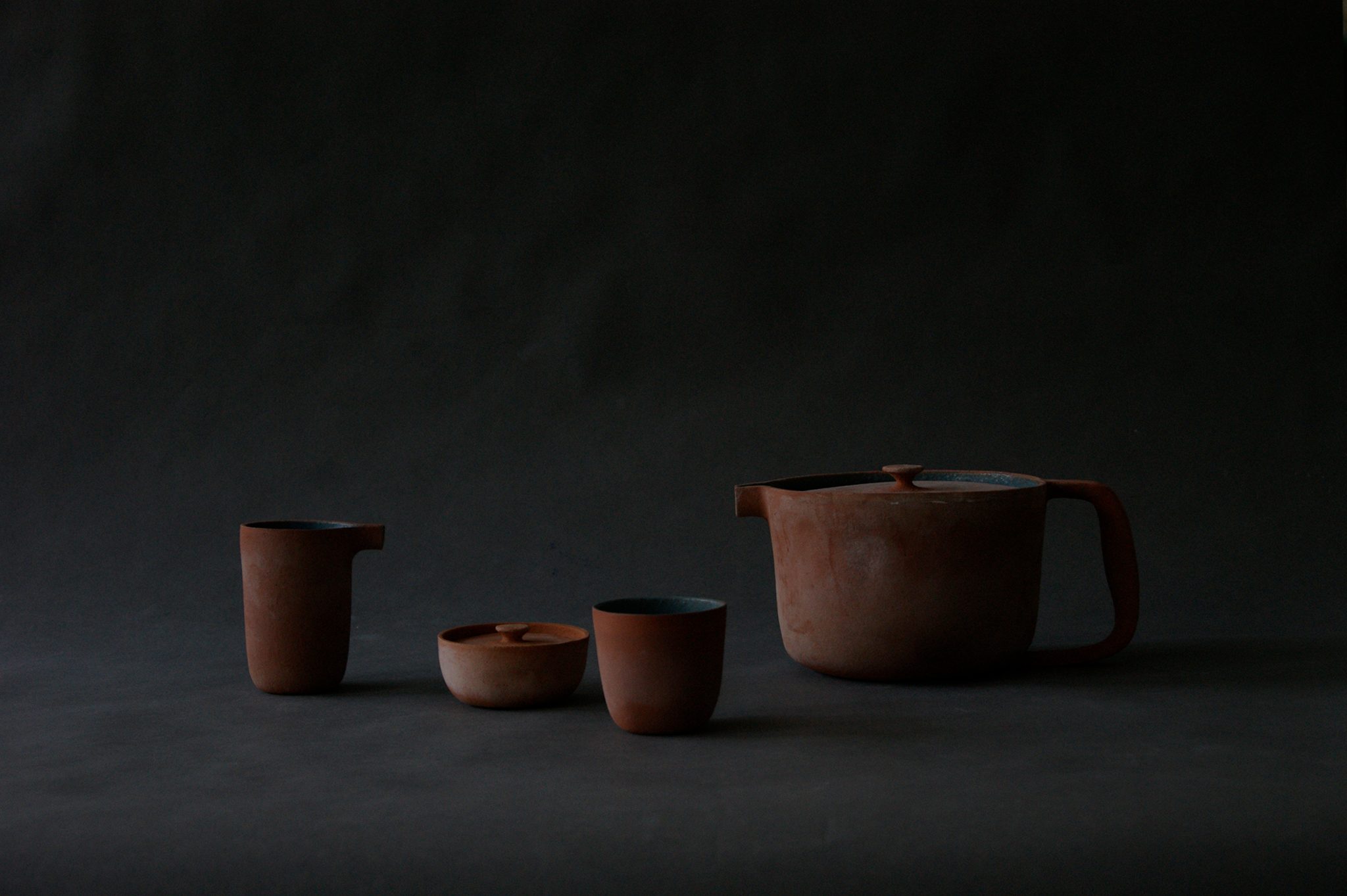DER WILDE TON DES MEERES
Wenn die Brise an der Nordsee mal wieder so frisch ist, dass man im 45 Grad Winkel über den Deich laufen muss, dann ist ein wärmender Tee danach genau das Richtige.
Der Ton für dieses Teeservice kommt mehr oder weniger direkt aus der Nordsee.
Wenn Steine die Flüsse herunter gespült werden, dann werden sie mit der Zeit so fein gemahlen, dass sie erst zu Sand, dann zu Schluff und irgendwann zu Ton werden.
Dieser Ton setzt sich dann in den ruhigeren Zonen der Flüsse und auch an den vor Wellen geschützten Bereichen des Wattenmeers ab.
Der anfangs dunkelgraue Ton der Nordsee färbt sich beim Brennen in ein Ziegelrot, das so warm ist wie frisch gebrühter Tee.
In passendem Kontrast dazu, ist das Service in Fjordblau glasiert, welches den Farbtönen der Nordsee sehr nahe kommt.
Da die Norddeutschen ihre Angelegenheiten gerne gut im Griff haben, ist der Griff der Teekanne dicker als die meisten seiner Verwandten. Formsprache und Ergonomie lehnen sich dabei eher an modernes Werkzeug als an das Porzellan der Großeltern.
Wer es aber trotzdem klassisch mag, kann das Milchkännchen und die Zuckerdose natürlich auch für Sahne und Kluntjes oder Kandiszucker verwenden.
THE WILD CLAY OF THE SEA
When the breeze on the North Sea is so rough that you have to walk across the dyke at a 45 degree angle, a warm tea afterwards is just the thing.
The clay for this tea service comes more or less directly from the North Sea.
As rocks are washed down rivers, they are ground so finely over time that they become sand, then silt, and eventually clay.
This clay then settles in the calmer zones of the rivers and also in the areas of the Wadden Sea that are protected from waves.
The initially dark gray clay of the North Sea turns brick red during firing, which is as warm as freshly brewed tea.
In matching contrast, the service is glazed in fjord blue, which comes very close to the colors of the North Sea.
As North Germans like to have things under control, the teapot’s handle is thicker than most of its relatives. The design language and ergonomics are based rather on modern tools than on grandparents‘ porcelain.
If you still like it classic, you can of course also use the milk jug and the sugar bowl for cream and Kluntjes or rock candy.
